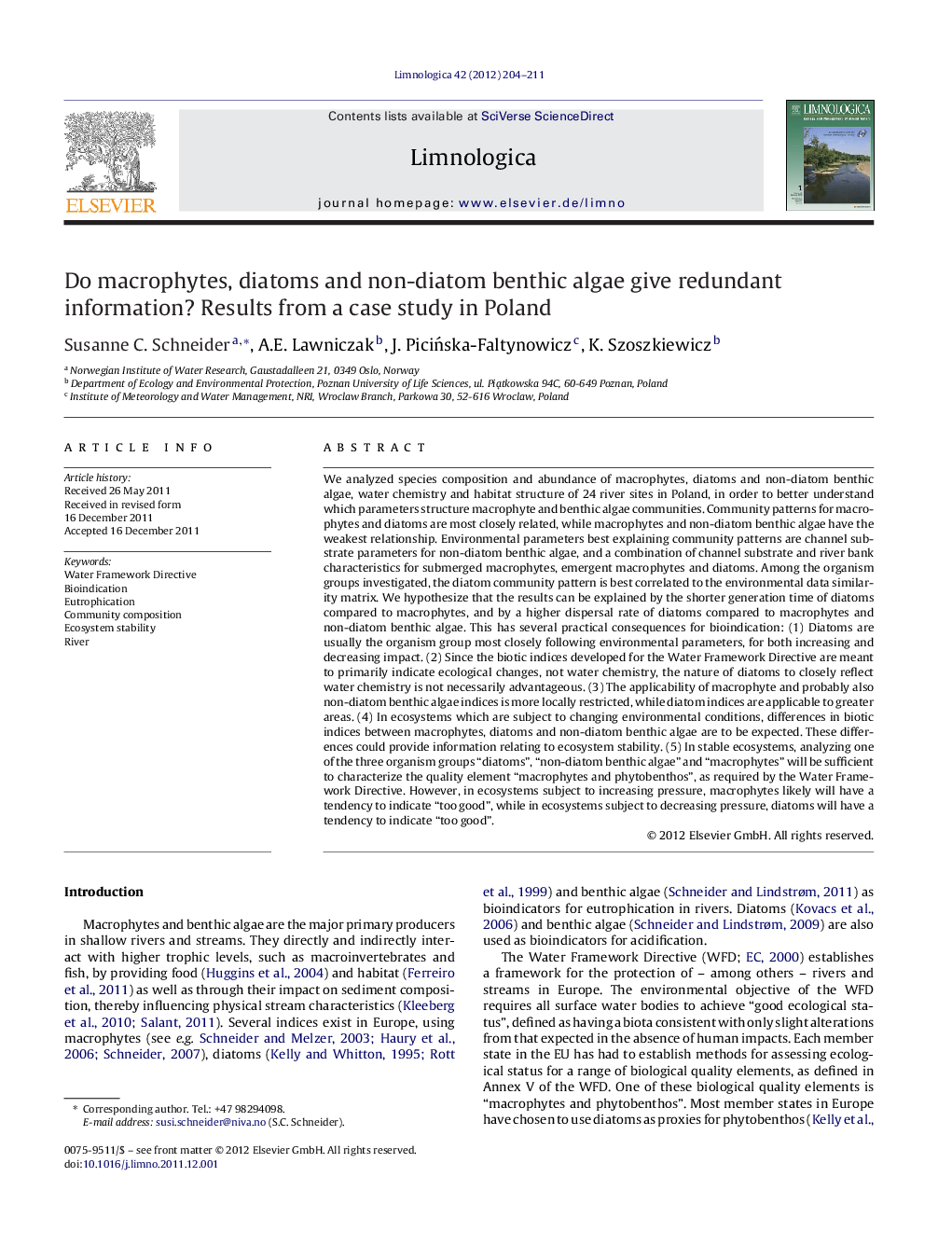| کد مقاله | کد نشریه | سال انتشار | مقاله انگلیسی | نسخه تمام متن |
|---|---|---|---|---|
| 4400476 | 1306968 | 2012 | 8 صفحه PDF | دانلود رایگان |

We analyzed species composition and abundance of macrophytes, diatoms and non-diatom benthic algae, water chemistry and habitat structure of 24 river sites in Poland, in order to better understand which parameters structure macrophyte and benthic algae communities. Community patterns for macrophytes and diatoms are most closely related, while macrophytes and non-diatom benthic algae have the weakest relationship. Environmental parameters best explaining community patterns are channel substrate parameters for non-diatom benthic algae, and a combination of channel substrate and river bank characteristics for submerged macrophytes, emergent macrophytes and diatoms. Among the organism groups investigated, the diatom community pattern is best correlated to the environmental data similarity matrix. We hypothesize that the results can be explained by the shorter generation time of diatoms compared to macrophytes, and by a higher dispersal rate of diatoms compared to macrophytes and non-diatom benthic algae. This has several practical consequences for bioindication: (1) Diatoms are usually the organism group most closely following environmental parameters, for both increasing and decreasing impact. (2) Since the biotic indices developed for the Water Framework Directive are meant to primarily indicate ecological changes, not water chemistry, the nature of diatoms to closely reflect water chemistry is not necessarily advantageous. (3) The applicability of macrophyte and probably also non-diatom benthic algae indices is more locally restricted, while diatom indices are applicable to greater areas. (4) In ecosystems which are subject to changing environmental conditions, differences in biotic indices between macrophytes, diatoms and non-diatom benthic algae are to be expected. These differences could provide information relating to ecosystem stability. (5) In stable ecosystems, analyzing one of the three organism groups “diatoms”, “non-diatom benthic algae” and “macrophytes” will be sufficient to characterize the quality element “macrophytes and phytobenthos”, as required by the Water Framework Directive. However, in ecosystems subject to increasing pressure, macrophytes likely will have a tendency to indicate “too good”, while in ecosystems subject to decreasing pressure, diatoms will have a tendency to indicate “too good”.
Journal: Limnologica - Ecology and Management of Inland Waters - Volume 42, Issue 3, September 2012, Pages 204–211